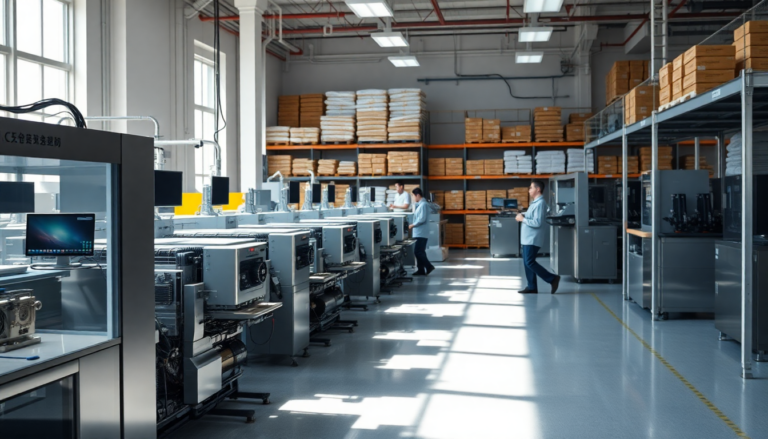Argomenti trattati
The semiconductor industry is experiencing significant shifts, particularly due to TSMC’s growing demand for CoWoS chipmaking materials. This increase isn’t just a ripple effect; it’s a tidal wave that is reshaping supply chains and creating shortages across various sectors, especially in memory production. As one of the largest players in the chipmaking arena, TSMC’s decisions reverberate through the market, impacting everything from raw materials to final product availability.
Understanding the CoWoS technology
CoWoS, which stands for chip-on-wafer-on-substrate, is a packaging technology that has captured the attention of major clients like Nvidia and AMD. This method allows for more efficient and powerful chip designs, particularly in high-performance computing applications. TSMC has invested heavily in expanding its CoWoS production capacity, aiming to meet the demands of next-generation GPUs and other advanced computing solutions.
The reliance on ABF substrates for CoWoS has created a bottleneck, as these materials are also essential for BT substrates used in memory chips. With TSMC’s dominance in the market, suppliers of BT substrates are feeling the pressure. The delays reported by Mitsubishi Gas Chemical regarding their raw material shipments highlight this growing issue. As the largest supplier of BT substrate materials, MGC’s struggles may lead to prolonged shortages that will ripple throughout the industry.
The implications for memory production
The ramifications of TSMC’s material demands extend deeply into the memory production segment. Companies that manufacture NAND flash controllers, like Phison and Silicon Motion, may find themselves in a prime position as existing stock becomes more valuable. As production slows due to material shortages, these suppliers could see an increase in demand for their products, potentially leading to price hikes.
Furthermore, the impact isn’t limited to just one type of memory. The entire ecosystem surrounding memory production is being affected. With companies now scrambling to secure their share of the dwindling material supply, the market is poised for a dramatic shift. This situation underscores how interconnected the tech supply chain is, where one giant’s needs can drastically alter the landscape for many others.
The role of market dynamics
Interestingly, the current climate of low demand for consumer electronics is providing a buffer against outright shortages. The cautious approach from manufacturers, largely due to uncertainties about tariffs and trade policies, has kept consumer demand at bay. This hesitance allows for some balance in the supply chain, giving companies the chance to recalibrate their strategies without facing immediate collapse.
However, this balancing act may not last. As companies like Phison ramp up production to meet the anticipated demand for NAND flash controllers, they are also preparing for potential increases in pricing as material shortages persist. This could lead to a scenario where consumers are faced with higher costs, even if the initial demand for consumer electronics remains low.
Future outlook amid AI advancements
The ongoing advancements in artificial intelligence are another factor driving hardware development, which can indirectly influence demand for chips and associated materials. Events like Computex have showcased how AI is at the forefront, pushing innovations that require more powerful and efficient chips.
As TSMC continues to thrive in this environment, it will be interesting to see how the company navigates its growing influence—both on the tech landscape and on the very materials that sustain it. Without a doubt, the ongoing demand for sophisticated chip technologies will keep the industry on its toes, potentially leading to further upheaval in supply chains.
In this rapidly evolving backdrop, the question remains: how will companies adapt to the ongoing challenges posed by material shortages? The semiconductor industry has always been known for its resilience and innovation, but it appears that the current climate may require a rethink of strategies to ensure sustainability and growth.

